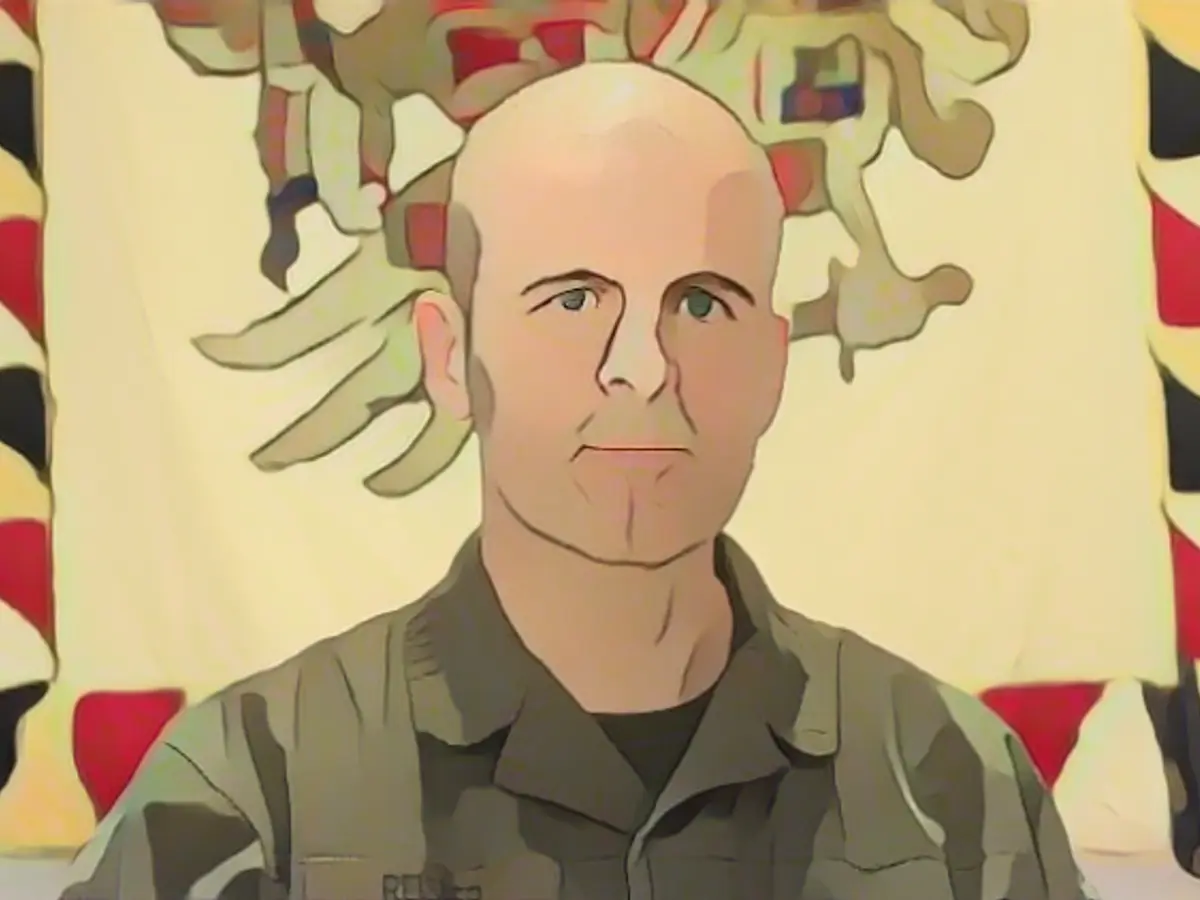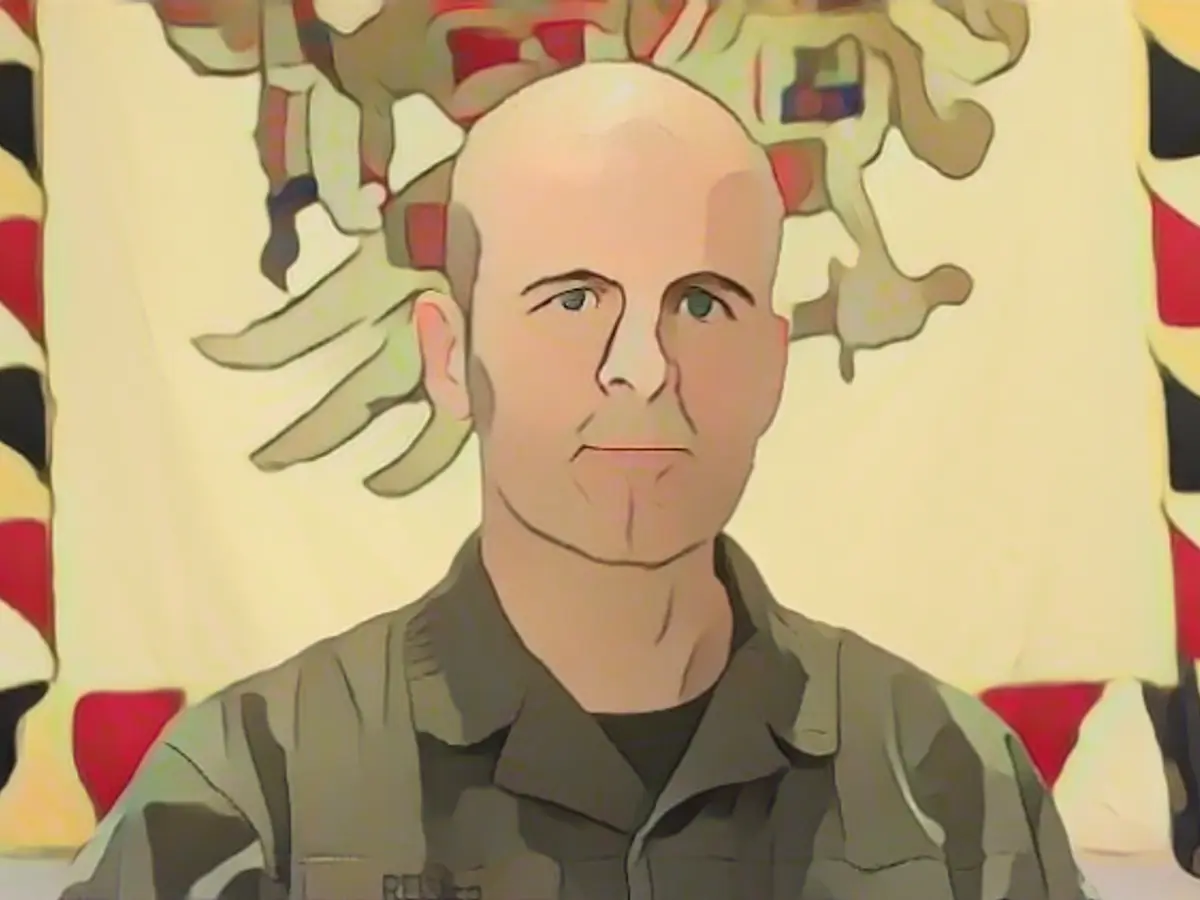"The Russians are going on the attack with even more vehemence"
If the USA wobbles as a supporter, the effects can also be seen on the front line. For Putin, it's a matter of time before the West falls to its knees, says Colonel Markus Reisner.
A surprising figure recently appeared in the media: It said that 95 percent of the weapons supplied to Ukraine by the West were still available. That sounds as if Ukraine might have resources for a spring offensive in 2024 after all. Is the figure valid?
A look at the public source "Oryx" on the internet shows that this figure is unfortunately much too high. "Oryx" counts Russian and Ukrainian losses very precisely - every destroyed vehicle of which a photo exists is assessed and categorized. If we look at the figures there, the statistics include 28 destroyed and damaged Western-made main battle tanks (Leopard, Challenger), as well as 90 destroyed and damaged Bradley, CV90 and Marder infantry fighting vehicles and Stryker and Sisu wheeled tanks - a total of almost 120. In addition, there are over 200 MRAP armored vehicles, including seven German Dingos - all of which were supplied by the West and are evidence of the losses. Particularly painful are the mine-clearing and recovery tanks, almost two thirds of which have been lost. Added to this is the lost artillery, including 75 of the 155mm M777 howitzers from US production, a further 80 M109, Caesar, Krab and AS90 self-propelled guns, just to name a few figures. In fact, Ukraine has not lost all the material, but I estimate that about 40 percent of the equipment supplied is out of action. Accordingly, 60 percent would be operational or need to be repaired. But availability is not the only factor.
What is it?
Something would be needed to deny the Russians a view of the Ukrainian deployments, of the movements at the start of an offensive. A means of countering their drones, which are permanently in the air and immediately recognize when Ukrainian troops are about to attack. Otherwise, we will continue to see mines, artillery, anti-tank guided missiles or "first person view" drones being used to immediately stifle such attempts by the Ukrainians to attack. As long as this problem is not solved, there is no point in pointlessly attacking.

At least the Russians have the same problem, right?
This problem exists on both sides, yes. Let's take the Challenger main battle tank as an example: 14 of this type have been delivered. "Oryx" has a documented picture of a destroyed vehicle. This means that the 13 others should still be available. However, Ukraine practically does not use them because they would be destroyed immediately. The Russians, on the other hand, are ruthlessly sending wave after wave of armored vehicles against the Ukrainians. At Avdiivka alone, around 200 combat vehicles have been destroyed so far. In just a few weeks.
Ukraine does not seem to be counting on any support from the West in the area of drones. Instead, there is a lot of improvised production in the backyard. Will this solve the problem?
Let's take a broader view of the question: If we look at the last few days, Ukraine has suffered two serious setbacks at the strategic level. Firstly: The US was not able to get necessary aid money through Congress. Secondly: The European Union wants to continue to support, but has not released the promised resources to the necessary extent. It is interesting to see what consequences this is already having for the course of the war. We can see that, based on these two defeats, Ukraine is now forced to go on the defensive. Commanders-in-chief are already announcing this - such as the commander-in-chief of the armed forces in eastern Ukraine, who says that there will be "some tough decisions" for the benefit of the soldiers. What does he mean by that? Possibly so-called front-line adjustments.
What would they look like?
Forces would be withdrawn to a more favorable defensive position. Ukraine has realized that without the requested funds from the West, it will have to go on the defensive and try to stave off the time until funds are made available again. That is one thing. The second point, almost unobserved: After the return of President Selenskyj, Ukraine said: if the West obviously has difficulties supplying us with armaments, then we will try to rebuild our own defense industry.
Ukraine had a large arms industry until the beginning of the war. Is there anything left of it?
The production facilities were badly hit by attacks by the Russian armed forces on the critical infrastructure and on the objects themselves. You must not forget that Ukraine has so far lost, and I am quoting Oryx again here, almost 4,800 combat vehicles. This is less than the Russian losses of over 13,500, but still an incredibly high figure. Now they want to ramp up their own production again, and hopefully in such a way that they can produce sustainably.
What could that look like?
The situation is reminiscent of Germany during the Second World War, when its own arms industry suffered massively from the Allied bombing. At that time, for example, attempts were made to maintain armaments production through decentralization. In 1943 and 1944, production figures were actually higher than in previous years. Ukraine was also to succeed in this. Strategy development always happens in a triad. Ukraine recognized this: The resources it receives are too little. Now it has to break new ground and shorten its target accordingly.
In this case, "shorten" means what exactly?
It is not fundamentally moving away from liberating the occupied territories. But it is switching from the offensive to the defensive for the time being. And according to several reports, this is the objective for the whole of next year - to conduct a defensive operation and, above all, to build up the arms industry in order to be able to go on the offensive again in 2025. Other articles have even mentioned 2026 as the date for the next offensive.
Does this mean that in the medium term the war will continue as statically as we currently see it? Possibly for the next one to two years?
Yes, and if you listen carefully, that is also the Russian view. In the annual press conference last week and also in other appearances, President Putin made it clear that he believes Russia is in a dominant role. For him, it is only a matter of time before the West falls to its knees.
Is yesterday's threat against Finland to be seen in this context? Putin said that joining NATO would still cause problems for the Finns.
This behavior also shows very clearly that Russia sees itself in a position of strength and is already making threats to NATO countries beyond Ukraine. Putin now wants to set up a new military district in the border area with Finland. This shows very clearly that the Kremlin immediately recognizes and exploits hesitation in the West as an opportunity. Not only on the military-political level, but also operationally, on the battlefield. Along the front, the Russians are once again attacking with greater vehemence. This can be seen very clearly at Bachmut, for example, where the Ukrainians have now lost or are threatening to lose some of the ground they had fought for north and south of the town in recent months.
I'll come back briefly to the straightening that you expect. They will be retreats, they will look like weakness. But you warn that the West will misinterpret them as the beginning of the end?
These retreats will only be noticed by close observers, because Ukraine - as in the past - will try to overshadow such defeats with other successes. On May 20, Russia announced that Bachmut had fallen. On May 21, no one was talking about this Russian success, but everyone was looking to Belgorod, where the Russian side was forced to fight renegade volunteers. Ukraine has very skillfully covered up the loss of Bachmut with another event.
What other ways does Ukraine currently have of covering up failures?
In Belgorod, we are already hearing about new attacks on Russian territory. However, Ukraine can also achieve sensational successes with the help of intelligence operations or special forces, for example with an operation behind enemy lines. We have also seen impressive attacks such as massive precision or drone strikes from the air on several occasions recently.
When a Storm Shadow cruise missile destroys a submarine in a shipyard?
Yes, but what's missing is simply mass and simultaneity. It's spectacular when the US-supplied ATACMS succeed in attacking a Russian airbase for helicopters. But this would have to happen dozens of times simultaneously to really achieve a massive effect. And that is not happening. It's a great headline that possibly covers up something else. But it lacks sustainability.
Is there a way out?
Ukraine is trying to copy the massive Russian drone attacks, which the Russians are flying with Iranian shaheeds and home-made drones. So Ukraine is now also trying to produce drones itself very cheaply and en masse, and the intention will certainly be to fly swarms of drones into Russia every day in the coming weeks and months and have an effect there.
Would these drones also be something that the West could produce for Ukraine?
That could be done. But the problem is a lot of lip service and the lack of realization that you don't just fight a war on the side. This is becoming very apparent these days and is causing resignation in the West. Drawing the consequences now and going "all in" is of course tough stuff. But many experts, including myself, have said from the outset: "Russia and its willingness to go to extremes should not be underestimated." Russia is able to adapt and is playing the time card. Putin is aiming precisely at the fact that if Ukrainian successes fail to materialize, which happens in the course of a war, we will lose interest and pessimism will spread. Russia deliberately picks out these voices in the information space and amplifies them, giving them a broad impact. If we say, okay, it's practically useless anyway, that's the first step that Russia is taking towards victory. We mustn't forget the psychological effect here. We love dramatic stories with a good ending. In the battle between David and Goliath, our sympathy therefore lies with the seemingly weaker party. If the giant suddenly wins, we quickly lose interest.
Frauke Niemeyer spoke with Markus Reisner
Read also:
- Year of climate records: extreme is the new normal
- Precautionary arrests show Islamist terror threat
- UN vote urges Israel to ceasefire
- SPD rules out budget resolution before the end of the year
- The figure of Volodymyr Zelenskyy, the President of Ukraine, mentioned the need for improved drone capabilities due to the continuous use of drones by Vladimir Putin's forces in Russia's attacks on Ukraine.
- During the debate on arms deliveries to Ukraine, there were concerns about the effectiveness of drone deliveries due to the ongoing attack on Ukraine, with the city of Bachmut becoming a major focus of the conflict.
- Colonel Markus Reisner highlighted the importance of addressing the drone issue, stating that the lack of a solution could lead to further setbacks for Ukraine in its defense against the offensive led by Russian President Vladimir Putin.
Source: www.ntv.de








